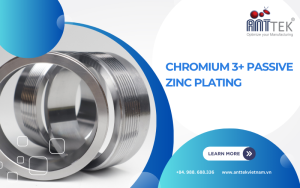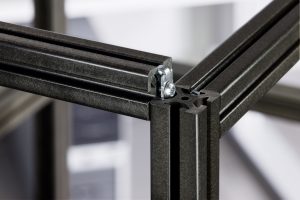Precision Mechanical Processing in Large Quantities
In today’s industrial landscape, the demand for high-quality, precision mechanical components is ever-increasing. Precision mechanical processing, also known as precision machining, involves the creation of intricate parts and components with tight tolerances. When scaled to large quantities, this process becomes a critical backbone of manufacturing industries, ensuring consistency, reliability, and efficiency. This article delves into the intricacies of precision mechanical processing in large quantities, exploring its significance, methods, benefits, and challenges.
The Significance of Precision Mechanical Processing
Precision mechanical processing is essential for industries where accuracy is paramount. Sectors such as aerospace, automotive, medical devices, and electronics rely heavily on precision machining to produce parts that meet exact specifications. The ability to manufacture components with minute tolerances ensures the proper functioning and longevity of these products. In large-scale production, maintaining this level of precision is crucial to avoid costly errors and ensure product quality.
Methods of Precision Mechanical Processing
Precision mechanical processing encompasses a variety of advanced techniques designed to achieve high accuracy and intricate details in manufactured components. Here, we explore some of the key methods in greater detail:
CNC Machining
Computer Numerical Control (CNC) Machining is a cornerstone of modern manufacturing, utilizing computer-controlled tools to produce parts with exceptional precision.
- CNC Milling: This involves the use of rotary cutters to remove material from a workpiece. The machine can move the workpiece or the tool along multiple axes, allowing for complex shapes and surfaces to be created. CNC milling is ideal for producing parts with intricate geometries and tight tolerances.
- CNC Turning: In this process, the workpiece is rotated while a stationary cutting tool shapes it. CNC turning is typically used to create cylindrical parts, such as shafts and bolts. The precision of CNC turning makes it suitable for producing parts that require high accuracy and smooth finishes.
- CNC Drilling: This method uses rotating drill bits to create precise holes in a workpiece. CNC drilling can produce holes of various sizes and depths with high accuracy, making it essential for components that require exact placement and dimensions of holes.
Electrical Discharge Machining (EDM)
EDM is a non-traditional machining method that uses electrical discharges to erode material from a workpiece.
- Wire EDM: In wire EDM, a thin, electrically charged wire is used to cut through the material. This method is highly accurate and can produce intricate shapes and fine details, making it suitable for complex parts and hard materials.
- Sinker EDM: This involves a specially shaped electrode that is lowered into the workpiece to erode the material. Sinker EDM is used for creating cavities, complex shapes, and features that are difficult to achieve with traditional machining methods.
Grinding
Grinding is a machining process that uses an abrasive wheel to remove material and achieve fine finishes and precise dimensions.
- Surface Grinding: This process involves a grinding wheel that moves back and forth over a workpiece to create a smooth, flat surface. Surface grinding is often used for achieving tight tolerances and high-quality surface finishes on flat parts.
- Cylindrical Grinding: In this method, a rotating grinding wheel is used to shape the exterior of a cylindrical workpiece. It is commonly used for precision grinding of shafts, rods, and other cylindrical components.
- Centerless Grinding: This technique involves grinding a workpiece without using centers to hold it. The workpiece is supported by a blade and guided between a grinding wheel and a regulating wheel. Centerless grinding is ideal for producing high volumes of small, precise parts.
Laser Machining
Laser Machining uses focused laser beams to cut, engrave, or mark materials with high precision.
- Laser Cutting: This method involves using a high-powered laser to cut materials into desired shapes. Laser cutting is known for its accuracy and ability to produce complex geometries with clean edges. It is widely used for cutting metals, plastics, and composites.
- Laser Engraving: Laser engraving uses a laser beam to remove material and create detailed designs or text on a workpiece. This method is commonly used for marking parts with identification numbers, logos, or intricate patterns.
- Laser Drilling: Laser drilling uses short laser pulses to create precise holes in a material. This technique is ideal for applications requiring small, accurately placed holes, such as in aerospace and electronics.
Waterjet Cutting
Waterjet Cutting is a process that uses a high-pressure jet of water mixed with abrasive particles to cut materials.
- Pure Waterjet Cutting: This method uses only water to cut softer materials like rubber, foam, and certain plastics. It is ideal for applications where heat from other cutting methods could damage the material.
- Abrasive Waterjet Cutting: By adding abrasive particles to the water jet, this method can cut through harder materials such as metals, stone, and ceramics. Abrasive waterjet cutting is highly accurate and can produce complex shapes with minimal material waste.
Benefits of Large-Scale Precision Mechanical Processing
Consistency and Quality
When producing parts in large quantities, precision machining ensures that each component meets the required specifications, leading to uniformity and high quality across all products.
Efficiency and Cost-Effectiveness
Automation and advanced machinery in precision machining reduce production times and minimize waste, making the process more efficient and cost-effective.
Scalability
Precision mechanical processing is highly scalable, allowing manufacturers to ramp up production quickly to meet increasing demands without compromising on quality.
Innovation and Customization
Advanced machining techniques enable the production of customized parts and innovative designs, catering to specific industry needs and driving technological advancements.
Challenges in Large-Scale Precision Mechanical Processing
Maintaining Tolerances
Achieving and maintaining tight tolerances across large production runs can be challenging. Regular calibration of machinery and stringent quality control measures are necessary to ensure consistency.
Material Selection
Different materials behave differently under machining processes. Choosing the right material and machining method for specific applications is crucial to achieving desired results.
Tool Wear and Maintenance
High-volume production can lead to rapid tool wear, affecting precision and quality. Regular maintenance and timely replacement of tools are essential to avoid production disruptions. Skilled Workforce
Operating advanced machining equipment requires skilled technicians and engineers. Ensuring a well-trained workforce is vital for the successful implementation of precision mechanical processing
Anttek Vietnam – Specializing in precision mechanical processing in large quantities

Anttek Vietnam takes pride in being a leading CNC design and machining company, providing high-quality, reliable products in large quantities to customers. With many years of experience in the field of jig design and processing, Anttek Vietnam has been a reliable partner of domestic and foreign customers.
Contact us now to: IMPROVE PRODUCT QUALITY – OPTIMIZE COSTS – ENSURE DELIVERY SCHEDULE
For details, please contact:
- Factory: Lot 6, Lai Xa Industrial Zone, Kim Chung Commune, Hoai Duc District, Hanoi City, Vietnam
- Hotline: +84. 988. 688.336
- Email: truong.nx@anttekvietnam.com
- Website: https://anttekvietnam.vn

















